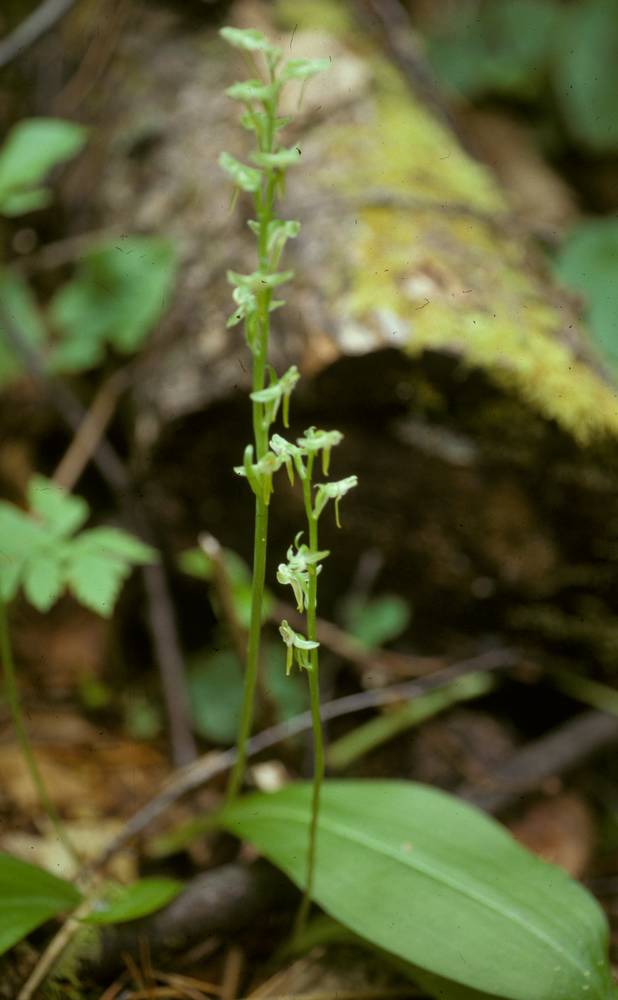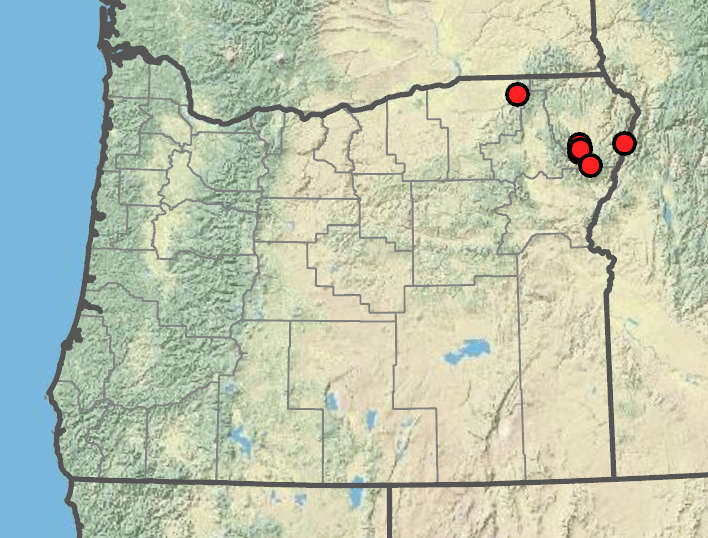Platanthera obtusata
Orchidaceae
blunt-leafed rein orchid, small northern bog orchid
orchid family
10–25 cm tall.
basal, 1, clasping base of stem, obovate to oblanceolate, 5–8 × 1.5–3 cm, green through anthesis.
simple;
basal, or cauline, alternate; opposite, or whorled, plicate; convolute, conduplicate, cylindric, or flattened;
margins entire, petioled or not;
stipules 0.
loosely 10–15-flowered.
racemes; panicles; spikes, or rarely cymose;
flowers 1 to many; terminal or lateral, generally with bracts.
more or less spreading, green to greenish white;
dorsal sepal broadly ovate with blunt apex, 2–5 × 2–4 mm;
lateral sepals lanceolate and oblique, 3–5 × 1.5–2 mm, strongly reflexed;
petals lanceolate, oblique, tapering abruptly at middle, 2–4 × 1–2 mm;
lip narrowly lanceolate, 3–6 × 1–2 mm, descending and reflexed;
spur cylindrical and tapering; as long or longer than lip; to 10 mm.
bisexual, usually strongly bilaterally symmetric;
sepals 3, often petaloid;
petals 3, highly modified; central petal modified into lip;
stamens 1 or 2 (rarely 3); opposite lip, fused to style to form column;
pollen generally aggregated into 2–8 pollinia;
ovary inferior, 3-carpellate with 1 or 3 locules;
style fused to anther filaments;
stigma 3-lobed with middle stigma lobe modified into a small beak (rostellum).
capsules.
numerous; minute and dust-like, lacking endosperm.
Platanthera obtusata
Orchidaceae
Mixed conifer forests. Flowering Jun–Aug. 1500–1800m. BW. ID, WA; throughout northern North America; northern Eurasia. Native.
The single basal leaf is diagnostic for P. obtusata.
Cosmopolitan. Approximately 880 genera; 9 genera treated in Flora.
Achlorophyllous plants within this family are known to obtain nutrition from forest litter through fungal intermediates. Fungal association is crucial to seed germination and plant establishment and often persists for the life of the plant. The “lip” within flower descriptions refers to a central petal that is distinguished by its irregular, often larger, shape. Its purpose is to attract and serve as a guide to pollinators.
James Riser
- Local floras:
BC,
OR,
WA
- Local Web sites:
Flora NW,
PNW Herbaria
WildflowerSearch
iNaturalist (observations)
USDA Plants Database
- LBJ Wildflower Center
- SEINet
- Plants of the World Online
- Encyclopedia of Life
- Wikipedia
- Google Image Search
- Local floras:
CA,
OR
- Local Web sites:
CalFlora,
CalPhotos,
Flora NW,
PNW Herbaria
WildflowerSearch
iNaturalist (observations)
- LBJ Wildflower Center
- SEINet
- Plants of the World Online
- Encyclopedia of Life
- Wikipedia
- Google Image Search



